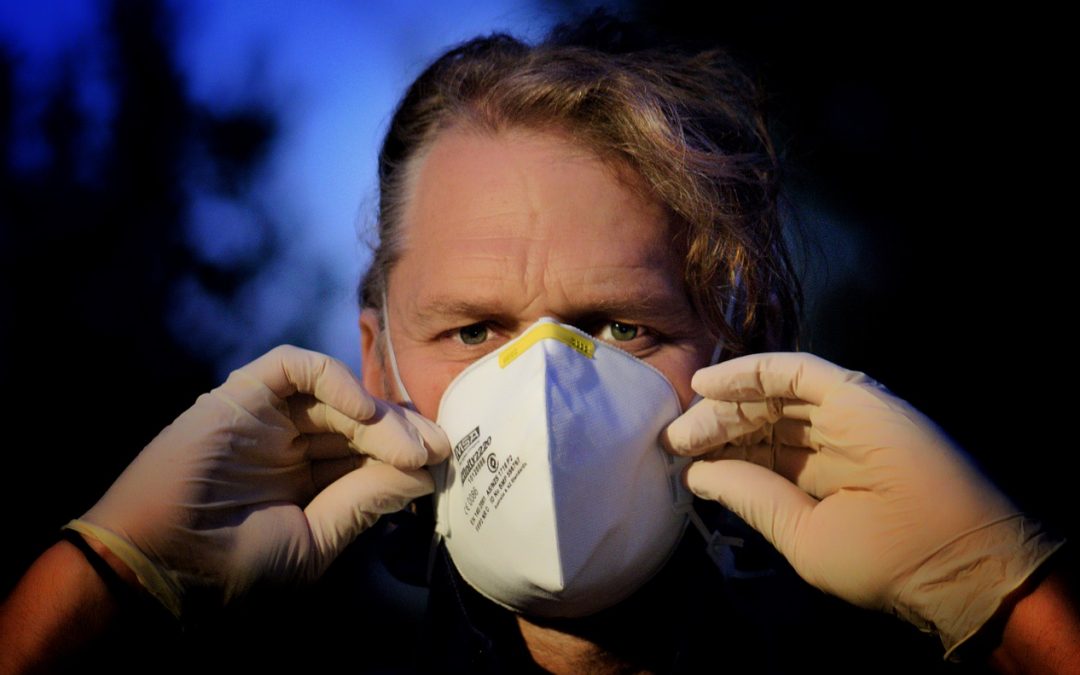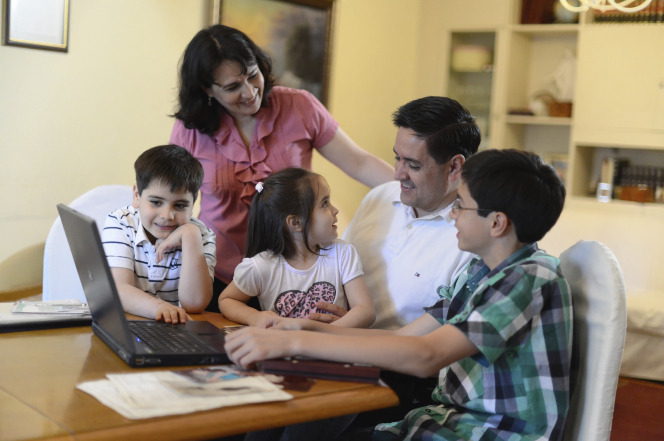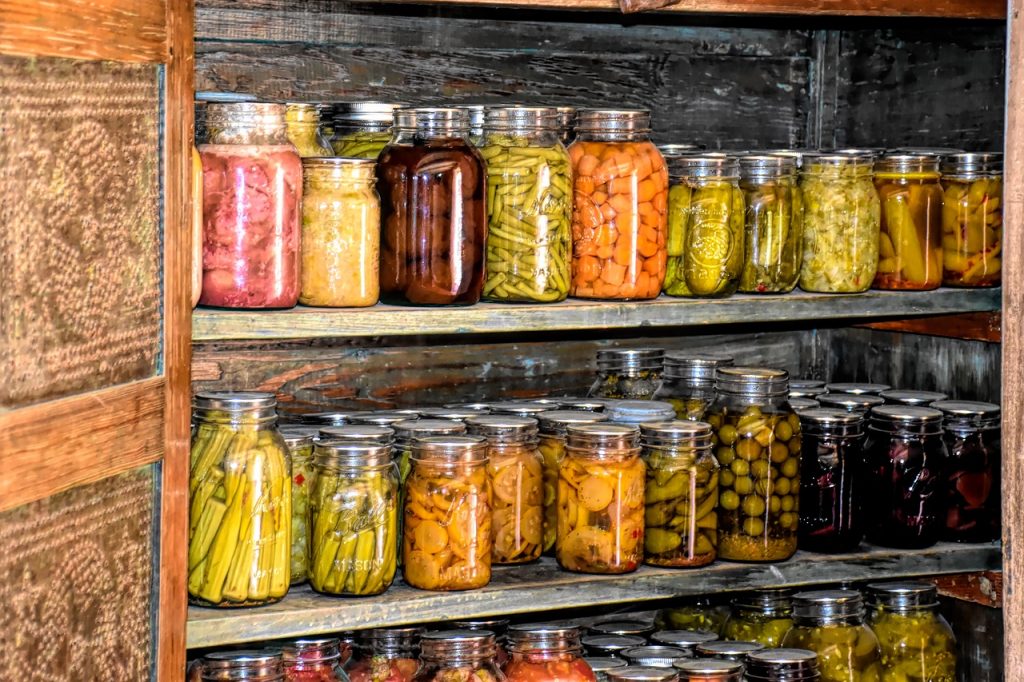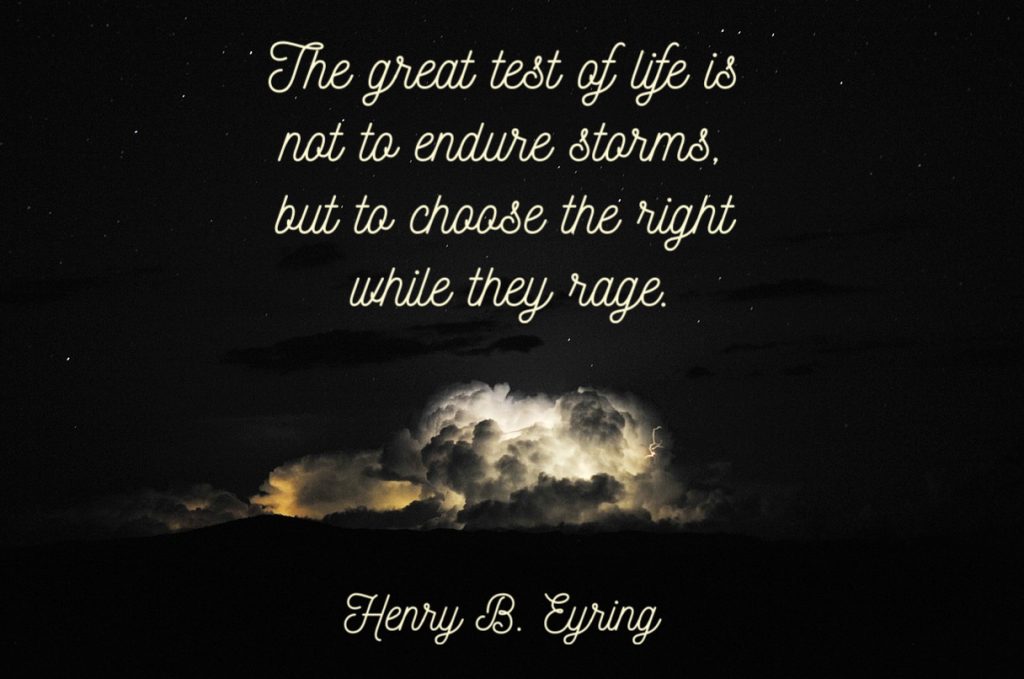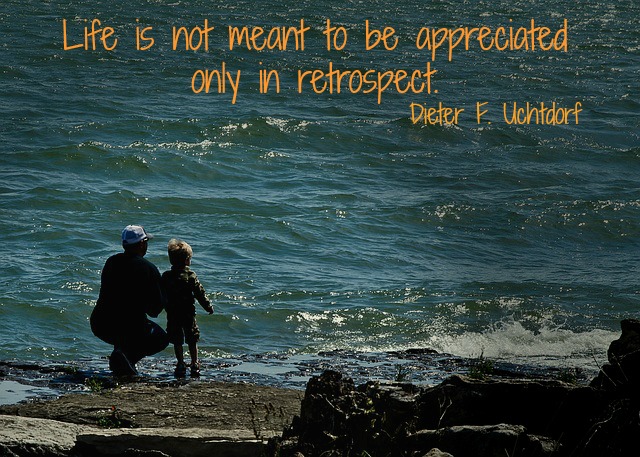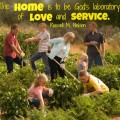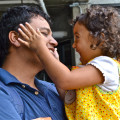My husband and I left the snowy mountains of Idaho and headed to the warm beaches of Mexico for a week of fun in the sun, leaving our kids behind to sulk in the cold. (It was a trip through my husband’s work—no kids allowed.) The biggest fear I had in going wasn’t leaving my kids behind, it was that we would get caught in an area hit by the COVID-19 pandemic and wouldn’t be allowed to go home. And that uncertainty wasn’t unfounded. While in Mexico, we kept an eye on the news and saw that President Trump suspended travel from Europe. Professional and collegiate sports leagues suspended games. The stock market went way down and then went back up.
The Church of Jesus Christ of Latter-day Saints has temporarily suspended church services worldwide, is limiting temple use and will broadcast April’s general conference from the Conference Center, only allowing the Tabernacle Choir and Church leaders to attend. (President Russell M. Nelson was right when he said back in October that this conference would be different!)
All of the precautions may be needed or much ado about not much. Only time will tell for sure. But the question we need to ask ourselves is: Are we ready for the impact on our communities? That’s an interesting question for members of The Church of Jesus Christ of Latter-day Saints—especially since leaders have been preaching preparedness for decades. Are “Mormons” (as members of The Church of Jesus Christ are often mistakenly called) prepared for the COVID-19 pandemic? Well, the Church of Jesus Christ as a whole is ready. It’s amazing to see the prophetic insight of Church leaders. But individuals and families? Well, that depends on how closely we’re following prophetic counsel. Let me explain.
The COVID-19 Pandemic
The COVID-19 pandemic is one for the books. What makes it so scary, right now, is that so much is unknown. And what is known is kind of alarming. According to a March 11, 2020, press release by the World Health Organization,
In the past two weeks, the number of cases of COVID-19 outside China has increased 13-fold, and the number of affected countries has tripled. …
We have never before seen a pandemic sparked by a coronavirus. … And we have never before seen a pandemic that can be controlled, at the same time.
So the focus has been on social distancing, hygiene, and containment, which means isolating areas and people staying home. Is there really a way that we can prepare for that? For many years, The Church of Jesus Christ taught preparedness. But preparedness is more than just food storage. The Church of Jesus Christ explained,
Self-reliance incorporates education, health, employment, family home production and food storage, family finances and spiritual strength.
This preparation isn’t something that should be done in a day. Rather, a little at a time as we can. President Gordon B. Hinckley said,
Our people for three-quarters of a century have been counseled and encouraged to make such preparation as will assure survival should a calamity come.
We can set aside some water, basic food, medicine, and clothing to keep us warm. We ought to have a little money laid aside in case of a rainy day.
Now what I have said should not occasion a run on the grocery store or anything of that kind. I am saying nothing that has not been said for a very long time.
The prophet’s counsel on preparedness is not intended specifically for this pandemic but can easily be applied. That’s how it was designed.
Response by The Church of Jesus Christ
Leaders of The Church of Jesus Christ were able to respond quickly and with progressive announcements because of its unique organization. The Church of Jesus Christ is a top-down organization, meaning that revelation and instructions for the general membership come from the Savior to His living prophets and apostles, through the leadership structures of the Church down to the members. So not long after each announcement from the prophet, our local bishop sent out emails detailing how these would be implemented in our congregation. Local congregations have ministering programs where members are assigned to look after specific families. Ministering brothers and sisters were asked to check on their families and assess needs. Our son’s mission president sent out a similar email, explaining how these changes would affect him on his mission.
The end result was that all church gatherings were canceled, and Latter-day Saints were to have worship services—including administering and partaking of the sacrament—at home. Missionaries in affected areas would teach via teleconferencing, and the missionary training centers in Provo, Utah, and Preston, England, would close their doors. Incoming missionaries would be trained via teleconferencing in their homes. Leaders from The Church of Jesus Christ stated,
We believe this temporary virtual training program will help to prepare missionaries for the field while minimizing risks related to communicable disease.
Each missionary will receive specific information regarding the length of training, schedules, and other logistics as his or her starting date approaches. Once missionaries complete their online training, they will travel directly to their mission assignments.
Not surprisingly, the Church already has programs and technology in place to accomplish this remote learning. And it gives new meaning to the focus on the “home-centered, Church supported” platform.
Home Centered and Church Supported Program
In October 2018, Church leaders announced a different approach to gospel learning that put the emphasis and responsibility for gospel learning on parents and individuals at home. President Nelson taught,
As Latter-day Saints, we have become accustomed to thinking of “church” as something that happens in our meetinghouses, supported by what happens at home. We need an adjustment to this pattern. It is time for a home-centered Church, supported by what takes place inside our branch, ward and stake buildings. …
For many years, Church leaders have been working on an integrated curriculum to strengthen families and individuals through a home-centered and Church-supported plan to learn doctrine, strengthen faith, and foster greater personal worship.
The program, called “Come, Follow Me,” standardized gospel learning for all ages. Which meant that parents and their children would be having the same lessons, tailored to their age group, at church and then be able to discuss the same topic and scriptures at home. There was also instruction material for discussion for individuals and families. This brought a greater focus on learning in the home that was supplemented by learning at church. Our family loves it, and the program has fostered some great conversations with our kids.
This year, students in seminary (religious instruction for high schoolers) also followed a similar curriculum. So we all studied the same book of scripture. This makes it so much easier to continue learning and discussing at home when we can’t get to church. When this was announced, my husband and I talked about how in the future it wouldn’t be surprising if we had to do church at home. I never thought it would happen so soon, nor did I imagine it would be because of an infectious disease!
Missionary Preparation
Gospel learning in the home takes on new meaning for those preparing for their missions via video conferencing. The Missionary Training Centers of The Church of Jesus Christ (or MTCs) are sacred places of learning where the spirit of the Lord is strong. Families whose missionaries are training at home instead of in an MTC must turn their homes into a literal MTC. This will be an easy task for those who have been following the counsel of the prophets and apostles. Elder David A. Bednar taught,
The ultimate missionary training center is in our homes; secondary missionary training centers are located in Provo, Manila, Mexico City, and in other locations. Our most instructive Sunday School classes should be our individual and family study in our places of residence; helpful but secondary Sunday School classes are held in our meetinghouses. …
Making our homes sanctuaries wherein we can “stand in holy places” is essential in these latter days. And as important as home-centered and Church-supported learning is for our spiritual strength and protection today, it will be even more vital in the future.
Missionary, Temple and Family History Work
Technology such as Google Hangouts and online chats have allowed missionary work to continue, even in areas that are shut down due to COVID-19. This same technology also allows members of all ages to continue working on family history at home so when temples reopen, they will have names of ancestors for whom ordinances need to be performed. Elder Bednar said,
The Lord has made available in our day remarkable resources that enable you to learn about and love this work that is sparked by the Spirit of Elijah. For example, FamilySearch is a collection of records, resources, and services easily accessible with personal computers and a variety of handheld devices, designed to help people discover and document their family history. These resources also are available in the family history centers located in many of our Church buildings throughout the world.
The youth are especially adept at this technology, which gives kids stuck at home productive things to do online. Elder Bednar continued,
It is no coincidence that FamilySearch and other tools have come forth at a time when young people are so familiar with a wide range of information and communication technologies. Your fingers have been trained to text and tweet to accelerate and advance the work of the Lord—not just to communicate quickly with your friends. The skills and aptitude evident among many young people today are a preparation to contribute to the work of salvation.
Preparation of the Latter-day Saints
The prophet and apostles have prepared The Church of Jesus Christ for a time such as this, but have the members prepared themselves? Preparation for Latter-day Saints is two-fold—spiritual and physical. Which one comes first? President Henry B. Eyring taught,
Most of us have thought about how to prepare for storms. We have seen and felt the suffering of women, men, and children, and of the aged and the weak, caught in hurricanes, tsunamis, wars, and droughts. One reaction is to ask, “How can I be prepared?” And there is a rush to buy and put away whatever people think they might need for the day they might face such calamities.
But there is another even more important preparation we must make for tests that are certain to come to each of us. That preparation must be started far in advance because it takes time. What we will need then can’t be bought. It can’t be borrowed. It doesn’t store well. And it has to have been used regularly and recently.
What we will need in our day of testing is a spiritual preparation. It is to have developed faith in Jesus Christ so powerful that we can pass the test of life upon which everything for us in eternity depends. That test is part of the purpose God had for us in the Creation.
We need faith to help us get through the rough times. No one is 100 percent sure what the economic impact of COVID-19 will be. In times of uncertainty, we rely on our faith for comfort. When the crisis comes, the time for preparation has passed. It is the same physically as spiritually. Have we developed the faith we need to weather this storm?
Why We Need Faith
In times of uncertainty, we rely on faith for comfort. We prepare by developing our faith, which requires obedience to God’s commandments. President Hinckley said,
We can so live that we can call upon the Lord for His protection and guidance. This is a first priority. We cannot expect His help if we are unwilling to keep His commandments.
This doesn’t mean that the righteous won’t suffer. President Hinckley continued,
We know, of course, that the rain falls on the just as well as the unjust (see Matthew 5:45). But even though the just die they are not lost, but are saved through the Atonement of the Redeemer.
What it does mean is that we can take comfort in knowing that we did our part, and whatever happens after that, we will still be OK.
Stockpiles of Toilet Paper and Supplies
The night before my husband and I were to leave Mexico, our daughter called and said she was at the store and the toilet paper and tissues were nearly gone, and the store was limiting the amount of both that people could buy. I had been hoping that I could get home before that happened, but no such luck. So I got online and tried to buy toilet paper and tissues, but I was out of luck there, too. We have toilet paper at home. But we are always shy on tissues because I have allergies all summer and fall and sinus issues the rest of the year. Strike 1 for me not being prepared. We do have food storage but are in need of staples like rice and probably flour. (Of course, two of the staples that stores are running out of!) Strike 2.
With all that said, my husband and I were not fully caught unaware. We have been following the news and planning for the eventuality. We have tried to follow the counsel of the prophet and apostles to the best of our ability. And I believe that is what God expects of us. A couple of years ago, the power went out at our house, and it was expected to last a few days. We were definitely not prepared for that! So I had to run to the store and buy bottled water, hot dogs, brats and cans of soup—items that we could cook on our woodburning stove. I spent more money that I wanted to, and almost more than we had. And then the power was only off for a day. But we were ready for an outage the rest of that winter. My plan is to not make that same mistake this time.
The Real Test
While the COVID-19 pandemic is a test of our preparation, the real test of life is to see which voices we will follow, which master we will obey. President Eyring taught,
… The great test of life is to see whether we will hearken to and obey God’s commands in the midst of the storms of life. It is not to endure storms, but to choose the right while they rage. And the tragedy of life is to fail in that test and so fail to qualify to return in glory to our heavenly home.
The earth will not glide smoothly to the Second Coming of the Savior. The way will be rocky, stormy and full of perils. This may be the start of the plagues, wars and rumors of wars that are prophesied before His triumphant return. But maybe not. President Eyring said,
Life [will] have storms in which we … have to make choices using faith in things we [can] not see with our natural eyes. …
It will take unshakable faith in the Lord Jesus Christ to choose the way to eternal life. It is by using that faith we can know the will of God. It is by acting on that faith we build the strength to do the will of God. And it is by exercising that faith in Jesus Christ that we can resist temptation and gain forgiveness through the Atonement.
And it is this faith upon which we can rely when the storms rage and pandemics hit. So are Latter-day Saints prepared for COVID-19? I am. I’m excited to have church at home with my husband and son passing the sacrament. And if push comes to shove, I have lots of wide-ruled lined paper to use instead of tissues.

